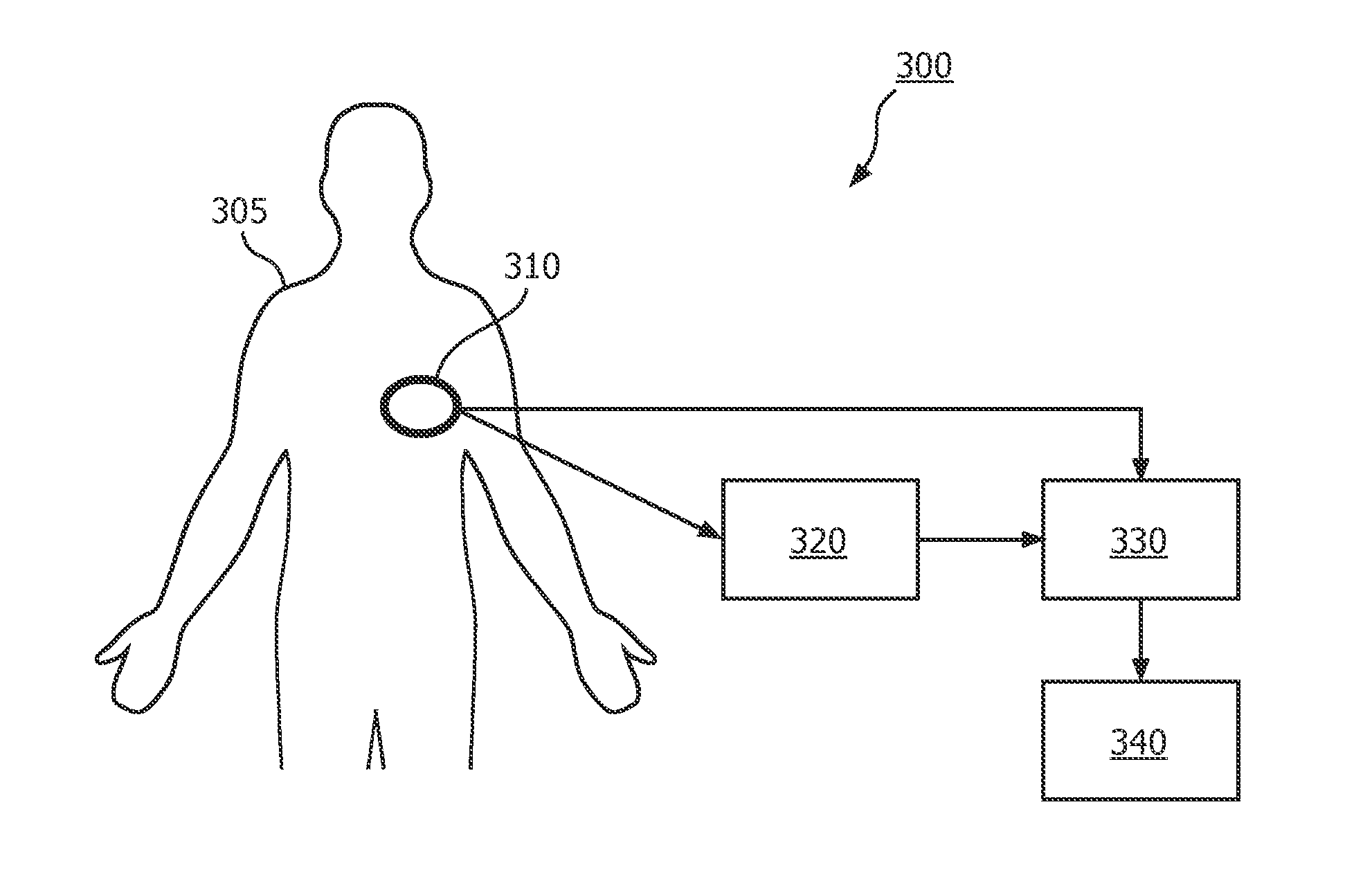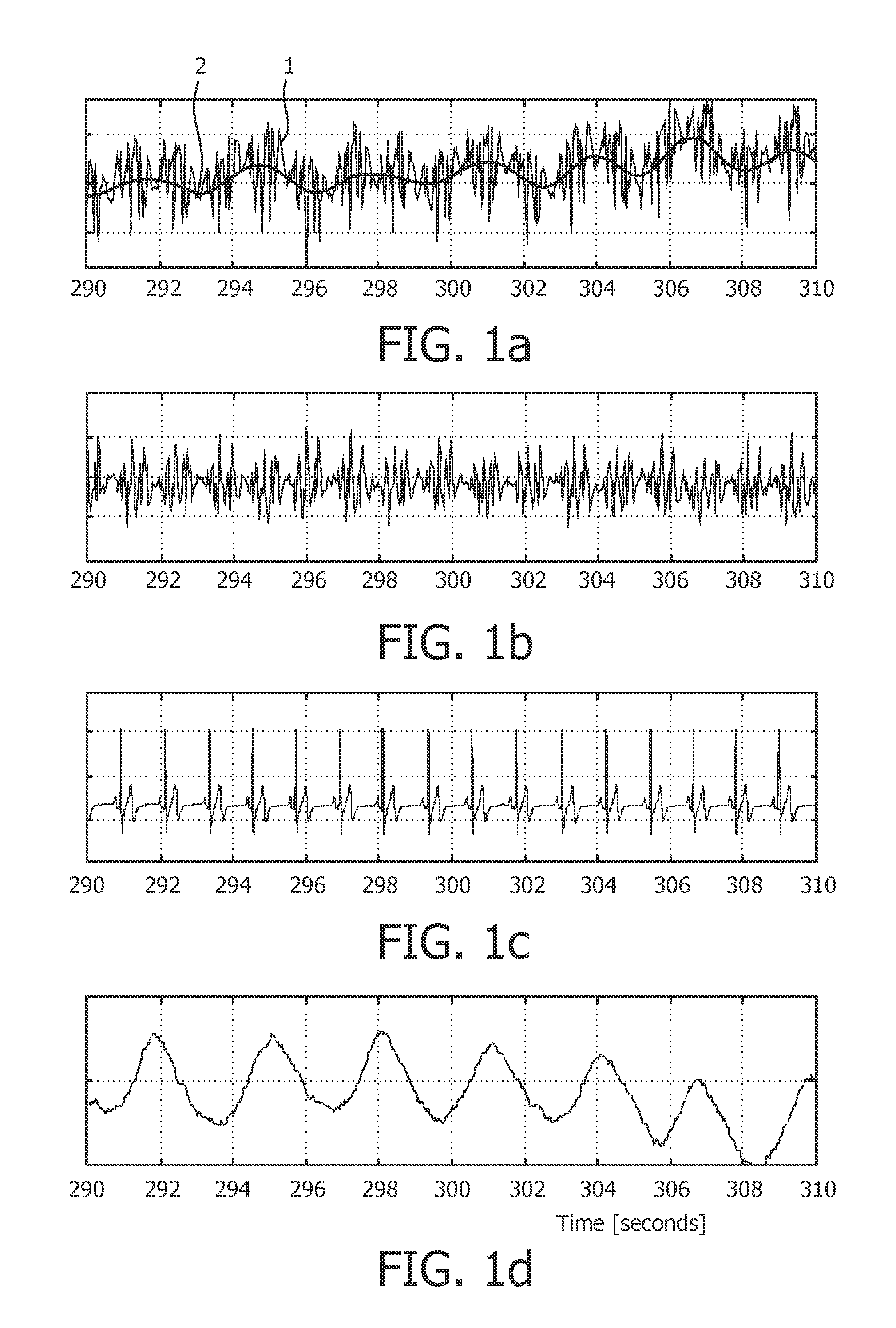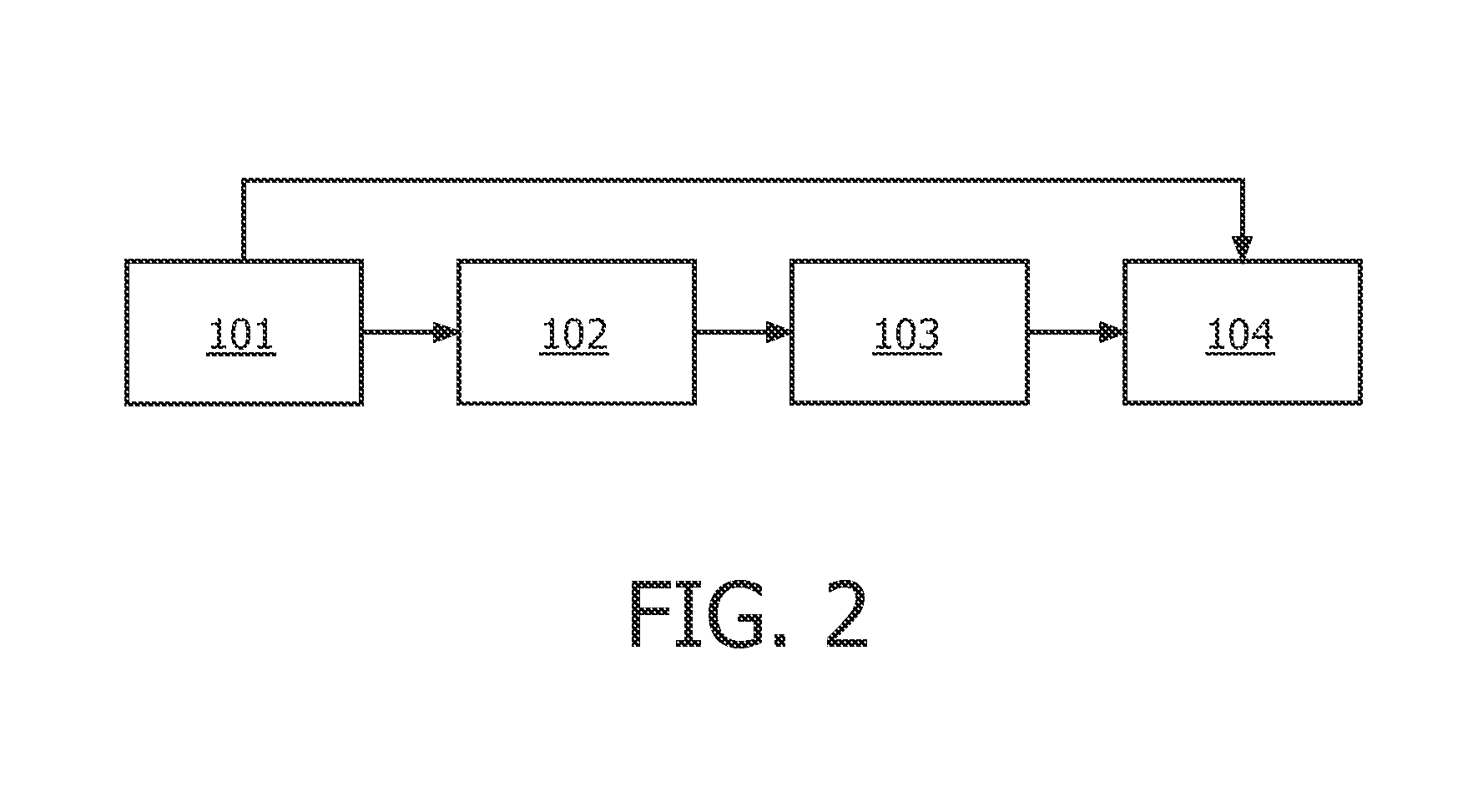Method and apparatus for determining a respiration signal
a technology of respiration signal and apparatus, applied in the field of method and apparatus for determining respiration signal, can solve the problems of sensor limitations, respiration band, degradation of measurement quality,
- Summary
- Abstract
- Description
- Claims
- Application Information
AI Technical Summary
Benefits of technology
Problems solved by technology
Method used
Image
Examples
first embodiment
[0052]FIG. 2 shows schematically a method for determining the respiration of a person according to the invention. In step 101 three accelerometer signals are measured with one tri-axial accelerometer positioned at a suitable position on the body of a person, in this example on the thorax. The three measured accelerometer signals comprise information on the movement of the thorax due to respiration and due to non-respiratory movement or motion of the thorax, such as the heart beat, along three different axes, for example three orthogonal axes. The raw accelerometer signals measured in step 101 are used in step 102 in which the vector magnitude signal of the three raw accelerometer signals is calculated. The vector magnitude can for example be calculated by taking the vector sum of the three accelerometer signals representing the three different axes:
m(t)=√[x(t)2+y(t)2+z(t)2)]
where m(t) represents the vector magnitude of the accelerometer at time instant t, and x(t), y(t) and z(t) rep...
second embodiment
[0056]FIG. 5 illustrates schematically the method of determining the respiration of a person according to the invention. In step 101 three accelerometer signals are measured with one tri-axial accelerometer positioned at a suitable position on the body of a person, in this example the thorax. The three measured accelerometer signals comprise information of the movement of the thorax due to respiration and, in this example, due to movement of the person along three different axes, for example three orthogonal axes. The raw accelerometer signals measured in step 101 are used in step 102 in which the vector magnitude signal is calculated from the three raw accelerometer signals. The vector magnitude can for example be calculated by taking the vector sum of the three accelerometer signals representing the three different axes. In step 203 a characteristic frequency is extracted from the vector magnitude signal that was determined in step 102. Optionally, in step 203 first the vector mag...
PUM
 Login to View More
Login to View More Abstract
Description
Claims
Application Information
 Login to View More
Login to View More - R&D
- Intellectual Property
- Life Sciences
- Materials
- Tech Scout
- Unparalleled Data Quality
- Higher Quality Content
- 60% Fewer Hallucinations
Browse by: Latest US Patents, China's latest patents, Technical Efficacy Thesaurus, Application Domain, Technology Topic, Popular Technical Reports.
© 2025 PatSnap. All rights reserved.Legal|Privacy policy|Modern Slavery Act Transparency Statement|Sitemap|About US| Contact US: help@patsnap.com



